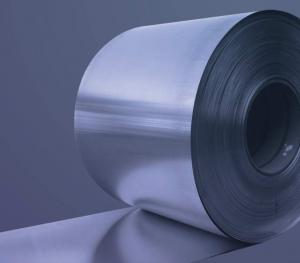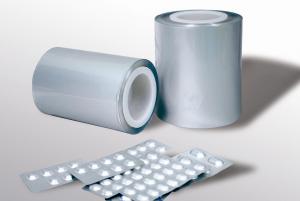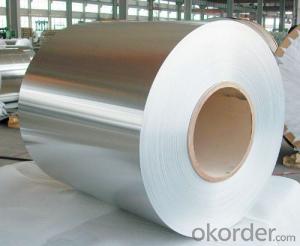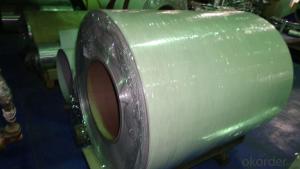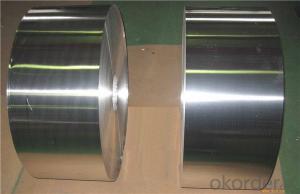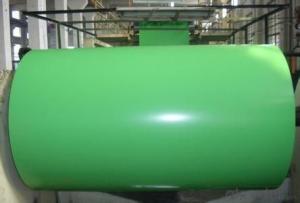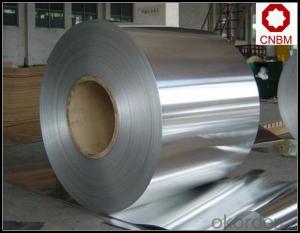Aluminum strip/sheet AA3015 Used for Composite Sheet
- Loading Port:
- Shanghai
- Payment Terms:
- TT or LC
- Min Order Qty:
- 5 m.t.
- Supply Capability:
- 150000 m.t./month
OKorder Service Pledge
OKorder Financial Service
You Might Also Like
1.Structure of Aluminum strip/sheet AA3015:
Aluminum strip/sheet AA3015 is designed for many field such as electronics, instruments, lighting decoration, packing industry, and house decoration, curtain wall, honeycomb-core panel, sandwich panel, aluminum composite panel, aluminum composite pipe etc.. Aluminum strip/sheet AA3015 is hard and everlasting under the blazing sun. You can choose the alloys as your habitation and we will do our best to meet your requests.
2.Main Features of the Aluminum strip/sheet AA3015:
• Smooth surface
• High manufacturing accuracy
• High strength of extension and yield
• Well packaged
• No marks, no scratch, no excessive oil
3. Aluminum strip/sheet AA3015
Alloy: | AA1050, 1060, 1070, 1100, 3003, 3004, 3005, 3105, 5052, 5083, 5754, 8011, 8006 |
Temper: | H14, H16, H18, H22, H24, H26, H32, O/F |
Thickness: | 0.2-100mm |
Width: | 30mm-1700mm |
4. Production of Aluminum strip/sheet AA3015
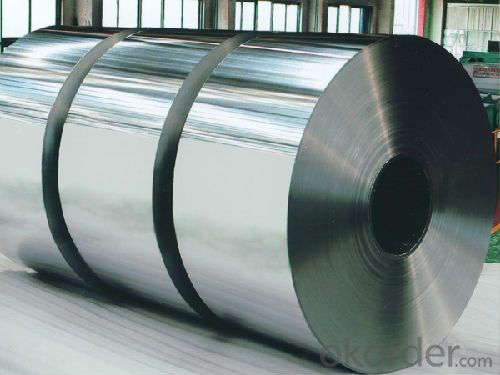
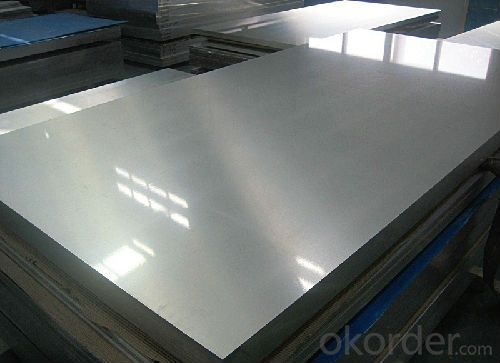
5.FAQ
We have organized several common questions for our clients,may help you sincerely:
① How about your company?
A world class manufacturer & supplier of aluminum coil and alloy blanks. Aluminum production base is comprised of 18 aluminum annealers, 10 coil and foil mills, 4 continuous production lines, 2 hot rolling production line and 3 prepainted lines.
Export 5000 tons per month to Asia, America and Middle East. Always do the best for our clients.
②Can you guarantee the quality of the products?
We are responsible for the quality of materials to get a long-term cooperation with clients in a reasonable period of time and we are glad to arrange and coordinate any third party inspection for you.
③What is the delivery time after purchase?
35 day after receiving client’s deposit or correct LC
Aluminum is the thickness below 0.2mm above to 500mm, 200mm width above, within the length of 16m aluminum material for aluminum plate or aluminum sheet, 0.2 mm below for aluminum, less than 200 mm in width as row material or bar (of course, with the progress of equipment, the most wide can do 600 mm row material more). Aluminum sheet refers to the rectangular plate with aluminum ingot rolling processing, divided into pure aluminum plate, aluminum alloy, aluminium sheet, thick aluminum riffled aluminium sheet.
The use of aluminum sheet: 1.Lighting 2. solar reflector plate 3. the appearance of the building 4. interior decoration, ceiling, metope 5.furniture, cabinets, 6. elevator, signs, nameplate, bags 7. car inside and outside decoration. Interior decoration, such as frame 8. household appliances: refrigerators, microwave ovens, audio equipment, such as 9.Aerospace and military aspects, such as China's large aircraft manufacturing, the Shenzhou series of spacecraft, satellites and other aspects. 10.mechanical parts processing 11.mold manufacturing 12.chemical / thermal insulation pipe coating.
Classification of aluminium sheet:
In the aluminum alloy grades are representative of the significance, the following according to the 7075T651 aluminum plate number as an example. The first 7 represents aluminum and aluminum alloy group Al Zn Mg based alloys. Aluminum and aluminum alloy groups are divided into nine categories. Among them, 1, 3, 5, 6, 7 series of aluminum, aluminum alloy, the other series in the actual use of the use of less chance.
First types: industrial pure aluminum
Second types: Al Cu alloy
Third types: aluminum manganese alloy
Fourth types: aluminum silicon alloy
Fifth types: aluminum magnesium alloy
Sixth types: aluminum magnesium silicon alloy
Seventh categories: aluminum zinc magnesium copper alloy
The eighth category: other alloys
Ninth type: spare alloy.
- Q:What’s the loss rate per kg when processing aluminum coil to aluminum sheet?
- Weight=(0.8×1220×2440×2.7)/1000000=6.4kg
- Q:What are the different types of surface treatments for corrosion resistance?
- There are several different types of surface treatments that can be used to enhance corrosion resistance in various materials. These treatments can be categorized into mechanical, chemical, and electrochemical methods. 1. Mechanical surface treatments: These methods involve physically altering or modifying the surface of the material to improve corrosion resistance. Some common mechanical treatments include shot peening, sandblasting, and polishing. Shot peening involves bombarding the material with small metal pellets to induce compressive stresses, which helps to prevent corrosion. Sandblasting is a process of blasting the surface with abrasive particles to remove any existing corrosion and create a clean, smooth surface. Polishing involves the use of abrasives to create a smooth and reflective surface, which reduces the likelihood of corrosion initiation. 2. Chemical surface treatments: Chemical methods involve applying a chemical solution or coating to the material's surface to create a protective layer against corrosion. One commonly used chemical treatment is chromating, which involves the application of a chromate conversion coating. This coating provides a barrier against corrosion and also improves the adhesion of subsequent paint or coating layers. Another chemical treatment is anodizing, commonly used for aluminum surfaces. Anodizing creates a thick oxide layer on the surface, which enhances corrosion resistance and can also provide decorative finishes. Other chemical treatments include phosphating, passivation, and galvanizing, which involve the application of specific chemical solutions or coatings to protect against corrosion. 3. Electrochemical surface treatments: Electrochemical methods utilize the principles of electrochemistry to create a protective layer on the material's surface. One such method is electroplating, which involves the deposition of a thin layer of a more corrosion-resistant material onto the surface of the base material. This can be done using various metals, such as zinc, nickel, or chromium. Another electrochemical treatment is anodic protection, where a sacrificial anode is connected to the material, causing the anode to corrode instead of the material. This process is commonly used for pipelines and underground structures. Overall, the choice of surface treatment for corrosion resistance depends on the material, the intended application, and the desired level of protection. Each treatment method has its advantages and limitations, and it is important to consider factors such as cost, environmental impact, and performance requirements when selecting the appropriate treatment.
- Q:Are there any health concerns associated with aluminum coils?
- Yes, there are some health concerns associated with aluminum coils. Aluminum coils used in heating and cooling systems can release small amounts of aluminum particles into the air, which can be inhaled. Prolonged exposure to high levels of aluminum particles may potentially have negative effects on respiratory health and could contribute to the development of lung diseases. However, the health risks are generally low and depend on various factors such as the duration and intensity of exposure. Regular maintenance and cleaning of the coils can help minimize any potential health concerns. It is advisable to consult with HVAC professionals or medical experts for specific concerns or recommendations.
- Q:Which type of wheel is more durable, long-lasting and which wheel type would cost more, Aluminum or chrome?
- i like aluminum although it does wear easily.
- Q:why do we use copper more than aluminum? give some characteristic of copper that makes it better then aluminum?
- more ductile, better conductor. thats about it. we use it for wires and electrical stuff. aluminum is for hard things like cans or cars.
- Q:helicopters rotorblades are made of honeycombed aluminum to give them strength, so isn't it a good idea for automakers to use the same technology to strengthen the frames of autos to make them lesslikely to cave in during a side impact auto accident?
- I'm not sure you are using Honeycombed aluminum in the right context. Honeycombed aluminum is generally a method of taking a solid sheet of aluminum and carving out areas so that rails of honeycombs are left on one side and the other still looks solid. However this is not done for strength, it is done for the weight savings. Like you said, helicopter rotors are milled so that the aluminum is honeycombed, but this is to shave off a few hundred pounds of metal, which means more passengers or lifting capability. Now honeycombed aluminum has about 70% of the strength of solid aluminum, given its impacted at the right angle. In this respect it could be used on cars to give comparable strength but give far better fuel economy just because your not lugging around all that weight.
- Q:Are aluminum coils suitable for food and beverage packaging?
- Yes, aluminum coils are suitable for food and beverage packaging. Aluminum is a versatile material that offers various advantages for packaging applications. It is lightweight, making it easy to transport and handle. Aluminum is also highly resistant to corrosion, which ensures that the packaging remains intact and protects the contents from external factors. Additionally, aluminum has excellent thermal conductivity, allowing for efficient heat transfer, which is beneficial for food and beverage products that require temperature control. It is also impermeable to light, moisture, and oxygen, providing an excellent barrier to maintain the quality and freshness of the packaged items. Furthermore, aluminum is recyclable and can be reused, making it an environmentally friendly choice for packaging. Overall, aluminum coils are a reliable and suitable option for food and beverage packaging due to their durability, protective properties, and sustainability.
- Q:Can aluminum coils be used for nameplates and labels?
- Yes, aluminum coils can be used for nameplates and labels. Aluminum is a versatile and durable material that can be easily shaped, engraved, or printed on. It is commonly used for manufacturing nameplates and labels due to its resistance to corrosion, lightweight nature, and ability to withstand harsh environments.
- Q:I would like to order 25 micron diameter 99.99% Aluminum wire required to use for making electrical connections. Only several cm are needed, so I would like to purchase a small spool. Delivery ASAP preferable (overnight or two day shipping would be best). This wire will be attached by hand using epoxy and not using a wire bonder.
- If they can't help, try asking the tech support guys at the wirebond manufacturers and the tool manufacturers. KS in the US and Shinkawa in Japan used to be the big guys. You can search for ultrasonic bond tools. You can also check with superconducting research centers; several private and public ones. Researchers might loan you materials and/or bonding support. BTW, Al critical temp is reportedly about 1.2°K, pretty tough to get that cold! U/S bond wire has 1% silicon, partly for hardness, you can probably bond pure wire though. Key is breaking up the oxide. Maybe bonding at cold temps and/or in vacuum would work. Also, I doubt epoxy would be good or superconducting at the temps. Al filled epoxy is unreliable electrical conductor due to oxide formation. Will be a bear to handle such fine wires without a bonder! Good luck!
- Q:What’s the difference between aluminum tile, coil and sheet? Why?
- Wood pallet is often used, which is easy to transport and can ensure the safety of products.
1. Manufacturer Overview |
|
|---|---|
| Location | |
| Year Established | |
| Annual Output Value | |
| Main Markets | |
| Company Certifications | |
2. Manufacturer Certificates |
|
|---|---|
| a) Certification Name | |
| Range | |
| Reference | |
| Validity Period | |
3. Manufacturer Capability |
|
|---|---|
| a)Trade Capacity | |
| Nearest Port | |
| Export Percentage | |
| No.of Employees in Trade Department | |
| Language Spoken: | |
| b)Factory Information | |
| Factory Size: | |
| No. of Production Lines | |
| Contract Manufacturing | |
| Product Price Range | |
Send your message to us
Aluminum strip/sheet AA3015 Used for Composite Sheet
- Loading Port:
- Shanghai
- Payment Terms:
- TT or LC
- Min Order Qty:
- 5 m.t.
- Supply Capability:
- 150000 m.t./month
OKorder Service Pledge
OKorder Financial Service
Similar products
New products
Hot products
Hot Searches
Related keywords

